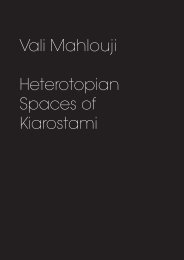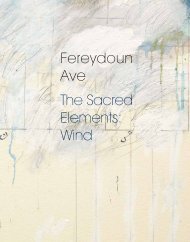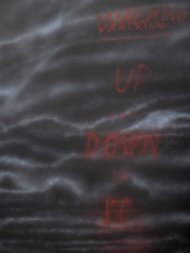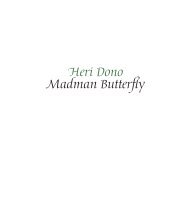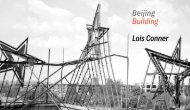Naiza H Khan Restore the Boundaries The Manora Project
Restore the Boundaries 2010 NK . catalogue.pdf - Naiza Khan
Restore the Boundaries 2010 NK . catalogue.pdf - Naiza Khan
Create successful ePaper yourself
Turn your PDF publications into a flip-book with our unique Google optimized e-Paper software.
<strong>Naiza</strong> H <strong>Khan</strong><br />
<strong>Restore</strong> <strong>the</strong> <strong>Boundaries</strong><br />
<strong>The</strong> <strong>Manora</strong> <strong>Project</strong>
<strong>The</strong> Pile<br />
2010<br />
relief print on somerset paper<br />
75.5 x 57 cm (30 x 22 in)<br />
4
<strong>Manora</strong>’s Fraught Trajectories<br />
For several years now, <strong>Naiza</strong> <strong>Khan</strong> has been engaged with a series of interlocking<br />
questions regarding artistic agency and <strong>the</strong> social world; <strong>the</strong>se inquiries have<br />
been sharpened by <strong>Khan</strong>’s engagement with <strong>Manora</strong> Island.<br />
A small island near Karachi with a recent population of 14,000, <strong>Manora</strong> has a<br />
long history of inhabitation and possesses various historical and religious sites,<br />
such as <strong>the</strong> Shri Varun Dev Hindu temple, Sikh gurdwara, a Sufi shrine, colonial<br />
era buildings, a church, lighthouse, a defence fort, and modern structures.<br />
<strong>The</strong>y point to a multi-religious social fabric that once existed, a site for Hindu<br />
and Muslim pilgrimage, and non-elite leisure. Its everydayness has a different<br />
texture from <strong>the</strong> frenetic urban metropolis of Karachi. Yet on a quieter scale,<br />
it evokes <strong>the</strong> same play of history, urban decay and transformation that many<br />
cities in <strong>the</strong> region are undergoing.<br />
Since 2006, most residents have left <strong>the</strong> island as part of a “golden handshake”<br />
scheme. For 3,000 remaining civilian residents, crumbling playgrounds and<br />
homes marked for demolition remain. <strong>The</strong> artist understands <strong>the</strong> collective<br />
memory of this community through <strong>the</strong> <strong>Manora</strong> apartment blocks built<br />
in <strong>the</strong> 1960s. <strong>The</strong>y now lie empty and haunted, bleaker than <strong>the</strong> church or<br />
temple nearby. However <strong>the</strong>ir incomplete state of demolition is also due to <strong>the</strong><br />
establishment’s neglect in rehabilitating <strong>the</strong> lived space.<br />
Homage<br />
2010<br />
video still (duration: 13.10 mins)<br />
<strong>Manora</strong> thus serves as one metaphor for <strong>the</strong> wrenching transformations in<br />
much of <strong>the</strong> region, where globalized development has yet to begin, but whose<br />
rhetoric of technological progress and promise of newness threatens to erase<br />
existing sociality. Never<strong>the</strong>less, as modern development remains a real need for<br />
most peoples of <strong>the</strong> region, so <strong>the</strong> artist’s intervention is not a call for nostalgia,<br />
but one for reflection and concern for subaltern lifeworlds caught within<br />
structures of inequality.<br />
A compelling myth capturing aspects of displacement and belonging was<br />
rendered by <strong>the</strong> great Sindhi poet, Shah Abdul Latif Bhittai (1689-1752), in his<br />
Risalo, a magisterial work of Sindhi literature influenced by Jalal al-Din Rumi,<br />
everyday life in Sindh, and local Hindu and Muslim legends. In <strong>the</strong> section Sur<br />
Ghatu Bhittai describes <strong>the</strong> legend of Morirro and <strong>the</strong> treacherous sea (also a<br />
Sufi analogue of <strong>the</strong> self and <strong>the</strong> world). <strong>The</strong> wise Morirro was handicapped<br />
and would stay home when his six bro<strong>the</strong>rs would go fishing. When Morirro<br />
learnt one day that all six had been swallowed up by a giant shark or a whale,<br />
he asked ironsmiths to make him a steel cage (or a glass and steel machinelike<br />
structure) with hooks and blades on its outside. Morirro got inside <strong>the</strong> structure<br />
6 7
Drawing for Morirro’s Fossil<br />
2009<br />
ink on paper<br />
21 x 15 cm (8 x 6 in)<br />
Drawing for Morirro’s Fossil<br />
2009<br />
ink on paper and digital print<br />
21 x 15 cm (8 x 6 in)<br />
and asked fishermen to tie strong ropes to it and lower it in <strong>the</strong> treacherous<br />
waters between Karachi (Kalachi) and <strong>Manora</strong>. <strong>The</strong> shark (or whale) swallowed<br />
<strong>the</strong> structure but its blades hooked into <strong>the</strong> creature’s mouth. <strong>The</strong> fishermen<br />
<strong>the</strong>n reeled in <strong>the</strong> creature and killed it. Morirro safely emerged and cut open<br />
<strong>the</strong> monster’s body, finding his bro<strong>the</strong>rs’ bones. He buried <strong>the</strong>m near Karachi<br />
and settled <strong>the</strong>re.<br />
Morirro’s myth emphasizes self and community in <strong>the</strong> face of larger predatory forces.<br />
<strong>Naiza</strong> <strong>Khan</strong> has been visiting <strong>Manora</strong> for <strong>the</strong> last two years, documenting its<br />
buildings and its people through a range of media, which include photographs,<br />
drawings, and video works. She has also faced ethical quandaries, as <strong>Manora</strong><br />
residents often construe her documentary activity to be that of a journalist or<br />
a legal activist, and expect her to advocate on <strong>the</strong>ir behalf in matters of policy.<br />
<strong>The</strong> artist has succinctly summarized her own fraught and liminal positionality:<br />
<strong>The</strong> narratives that are at play in this context are immense, and I am imposing<br />
my own personal subjectivity to reclaim this space; a space that is at <strong>the</strong> brink<br />
of erasure. I also realised that landscape could be used in a metaphorical way.<br />
Aes<strong>the</strong>tically, my process is being driven by content that is continuously in flux.<br />
So each time I return from <strong>Manora</strong>, I ask myself, “How do I reclaim this space and<br />
what is my position in all this?” I am nei<strong>the</strong>r a journalist, politician nor property<br />
developer, but an artist who is witnessing certain changes in small and large<br />
proportions. My decisions are measured by <strong>the</strong> immensity of what I find and<br />
my anxiety of aes<strong>the</strong>tisizing <strong>the</strong> misery out <strong>the</strong>re. I am trying to find strategies<br />
of accessing this space and needing to negotiate this on terms that I cannot<br />
completely control. (Art Dubai Journal, Issue 7, 2010).<br />
8<br />
<strong>The</strong> artist’s attention has been captured by a number of especially striking<br />
developments: Rusting ships and trawlers in <strong>the</strong> water, and <strong>the</strong> modern ruins<br />
of <strong>the</strong> KPT blocks on <strong>the</strong> island, which are reminiscent of a graveyard like <strong>the</strong><br />
rusty ships; <strong>the</strong> site of <strong>the</strong> F. B. Public School building, where, in September 2008,<br />
four children died when a wall collapsed on top of <strong>the</strong>m. Abandoned furniture<br />
has been piled up in a heap in its courtyard, a fossilized remainder; plans to<br />
convert <strong>Manora</strong> to a mini Dubai. While many of <strong>the</strong>se have been held back due<br />
to legal activism and by <strong>the</strong> current financial crisis and instability in <strong>the</strong> country,<br />
<strong>the</strong>y promise a messianic hyper modernized utopia seeking instantaneous<br />
realization, seemingly without social costs. Of course, none of <strong>the</strong>se structures<br />
would even be remotely affordable by <strong>Manora</strong>’s original residents; except <strong>the</strong><br />
presence on <strong>the</strong> beach of <strong>the</strong> “doorbeenwalas,” where an ordinary visitor can pay<br />
twenty rupees and stand to view <strong>the</strong> distant ships on <strong>the</strong> horizon through <strong>the</strong><br />
home-made telescopes placed on <strong>the</strong> beach. This is especially poignant, as most<br />
of <strong>the</strong> visitors come from <strong>the</strong> inner city of Karachi, where <strong>the</strong>re are not many<br />
open spaces to view <strong>the</strong> horizon and to reflect on such sublime sights. For <strong>the</strong><br />
artist, <strong>the</strong> telescopes on <strong>the</strong> beach emblemize a sense of stretched imagination,<br />
<strong>the</strong> possibility of apprehending something far greater than one’s immediate<br />
self.<br />
Now nei<strong>the</strong>r fully inhabited, nor completely ruined, <strong>Manora</strong> is a compelling and<br />
painful site, uncanny and disorienting, in which stretches of sensory emptiness<br />
and rupture are suddenly punctuated by functioning defence establishments,<br />
historic structures and local life. Perhaps due to <strong>the</strong> processual and uneven<br />
character of <strong>Manora</strong>’s ongoing transformation, <strong>the</strong> artist has chosen to adopt a<br />
9
longer-term experimental approach in this project, deploying a variety of media<br />
and aes<strong>the</strong>tic strategies as probes that seek to record <strong>the</strong> fraught persistence of<br />
lived experience and memory: “I wanted to keep this visual research moving at<br />
a slow pace, without <strong>the</strong> pressure to produce results immediately and to avoid<br />
aes<strong>the</strong>tisizing <strong>the</strong> issues that were quite complex,” notes <strong>the</strong> artist. (Art Dubai<br />
Journal, Issue 7, 2010).<br />
<strong>Khan</strong>’s intervention is multilayered and ongoing, here I discuss only a few of its<br />
valances. She is in <strong>the</strong> process of creating clusters or fossilized objects that are<br />
in part inspired by <strong>the</strong> myth of Morirro. <strong>The</strong>se pieces of <strong>the</strong> “fossil” of Morirro’s<br />
vessel, a magical and mythical object, have ostensibly been “found” 500 years<br />
later by <strong>the</strong> artist. <strong>The</strong> fragments of this large capsule are washed up on <strong>the</strong><br />
shore, but imagined here as an amalgam of objects from different time frames.<br />
<strong>The</strong> capsule fragments begin to offer glimpses for imagining o<strong>the</strong>r futures<br />
as <strong>the</strong> telescope frames counter posit <strong>the</strong>m in a liminal space that stretches<br />
forward indefinitely.<br />
<strong>The</strong> dialectic between non-monumental memorialization and lived experience<br />
is vividly captured in <strong>the</strong> video Homage, in which <strong>Khan</strong> focuses on a pile of<br />
broken and discarded school furniture in <strong>the</strong> middle of a desolate, rubblestrewn<br />
site. <strong>The</strong> artist intervenes by painting <strong>the</strong> furniture in a sky-blue colour,<br />
<strong>the</strong> exact color of painted gravestones nearby where <strong>the</strong> children, who died<br />
from <strong>the</strong> collapse of <strong>the</strong> school wall, are buried. She is assisted in her labour by<br />
local residents, and one also hears <strong>the</strong> voices of onlookers who describe <strong>the</strong>ir<br />
everyday concerns with droll and resigned pathos. <strong>The</strong> video grapples with <strong>the</strong><br />
question of everyday marginalization, displacement, and disenfranchisement<br />
as alluded to in <strong>the</strong>se unscripted parallel conversations. Here <strong>the</strong> very process<br />
of memorialization is continually punctuated by lived subaltern concerns,<br />
suggesting that <strong>the</strong> transformation of <strong>Manora</strong> is apprehended only in its<br />
immediacy, not in its larger socio-political totality. This experience of <strong>the</strong> local<br />
residents is also emblematic of <strong>the</strong> challenge <strong>the</strong> artist has set for herself in<br />
this project--<strong>the</strong> question of visualizing <strong>Manora</strong>’s historical palimpsest under<br />
erasure, <strong>the</strong> problem of voicing <strong>the</strong> concerns of <strong>the</strong> subaltern voices, and <strong>the</strong><br />
choice of aes<strong>the</strong>tic strategies. <strong>The</strong> artist’s approach <strong>the</strong>refore does not privilege<br />
a single method or voice, but attempts to fashion narratives, metaphors, and<br />
dialectical juxtapositions, which offer <strong>the</strong> viewer a series of illuminating flashes<br />
of <strong>Manora</strong>’s fraught trajectories.<br />
Homage<br />
2010<br />
video still (duration: 13.10 mins)<br />
Iftikhar Dadi is Assistant Professor in <strong>the</strong> Department of History of Art at Cornell<br />
University, USA.<br />
10<br />
11
Graveyard at 11.23 am<br />
2010<br />
silkscreen, watercolour and graphite<br />
100 x 70 cm (39 x 27 1/2 in)<br />
12
A Porous Space<br />
a conversation with Kamila Shamsie<br />
and <strong>Naiza</strong> H <strong>Khan</strong><br />
Kamila Shamsie: <strong>The</strong> journey from Karachi to <strong>the</strong> island of <strong>Manora</strong> has always<br />
been interesting to me. <strong>The</strong>re are two ways of doing it. You can hire a sail boat<br />
and go on a romantic journey with detours - it’s about <strong>the</strong> imagination, you’re<br />
leaving <strong>the</strong> city, going somewhere calmer, <strong>the</strong> wind in your hair. <strong>The</strong> o<strong>the</strong>r mode<br />
of transport is a public motor boat - tightly packed in, traveling with people who<br />
live on <strong>the</strong> island, for whom it’s <strong>the</strong>ir reality - and often quite a harsh reality. So<br />
right from <strong>the</strong> setting-off, you can see <strong>Manora</strong> as a place of <strong>the</strong> imagination<br />
and/or a place of difficult reality. I wonder if your understanding of <strong>the</strong> island is<br />
also along <strong>the</strong>se lines.<br />
<strong>Naiza</strong>h H <strong>Khan</strong>: I think it’s definitely based on <strong>the</strong> same axis. I can think of <strong>Manora</strong><br />
in that more romanticized way because it gives me this sense of freedom, of<br />
imagining possibilities. On <strong>the</strong> o<strong>the</strong>r side of <strong>the</strong> coin - you see <strong>the</strong> dilapidation<br />
and degradation of <strong>the</strong> space, and <strong>the</strong> complete breakdown of any community<br />
or any sense of ownership, so <strong>the</strong> harsh realities surface as soon as you step<br />
down on <strong>the</strong> island. It’s possible to be in one space and deny <strong>the</strong> o<strong>the</strong>r. Each<br />
time I visit, I return with new ideas so, while I see <strong>the</strong> harsh realities, it remains a<br />
porous space that gives a lot… it allows me to access my imagination.<br />
KS: <strong>The</strong>re’s something about <strong>the</strong> sea that does that, I think. It does for me.<br />
NK: Once as we were crossing <strong>the</strong> straits this young guy said, “this is why people<br />
come from Karachi. When <strong>the</strong>y cross <strong>the</strong> waters <strong>the</strong>y drown <strong>the</strong>ir sorrows and<br />
leave everything behind.” So <strong>the</strong> water has this kind of ritual, purifying function.<br />
According to local superstition, <strong>the</strong> crossing from one shore to ano<strong>the</strong>r, breaks<br />
<strong>the</strong> spell of black magic and can ‘cool’ <strong>the</strong> effects of amulets.<br />
Cluster III (Mobile Aspirations)<br />
2010<br />
brass<br />
18 x 10 x 12 cm (7 x 4 x 4 1/2 in)<br />
KS: When I first got to know <strong>Manora</strong> as a child <strong>the</strong> lighthouse was <strong>the</strong> most<br />
significant part of <strong>the</strong> island - I’d go to <strong>the</strong> top and look out back at <strong>the</strong> sea, and<br />
never consider <strong>the</strong> rest of <strong>the</strong> island. And <strong>the</strong>n later I read about <strong>Manora</strong>’s fort<br />
- <strong>the</strong> construction of which marks <strong>the</strong> founding of <strong>the</strong> city of Karachi. So again,<br />
I remained blind to <strong>the</strong> present realities of <strong>the</strong> island and its people. Today, <strong>the</strong><br />
fort and lighthouse are used by <strong>the</strong> navy and are kept in good shape, whereas if<br />
you look at <strong>the</strong> more recent constructions - <strong>the</strong> schools and apartment blocks<br />
- <strong>the</strong>y’re in ruin. So it’s <strong>the</strong> recent history which is in ruins whereas <strong>the</strong> past is<br />
preserved - <strong>the</strong>re’s this odd sense of backwardness.<br />
NK: A reversal of preservation…two time frames operating at different speeds.<br />
KS: Yes. <strong>The</strong> fort and lighthouse are preserved because <strong>the</strong>y can be brought into<br />
<strong>the</strong> story of Pakistan’s military history, whereas <strong>the</strong> history of <strong>the</strong> people living in<br />
those blocks is seen as expendable. <strong>The</strong> blindness I suffered in my first interactions<br />
with <strong>the</strong> island is widespread. What actually is <strong>the</strong> story of <strong>the</strong>se ruined blocks?<br />
14 15
NK: A large construction firm based in Dubai signed an MOU (Memorandum of<br />
Understanding) to redevelop a part of <strong>Manora</strong> as a resort. Of course this would<br />
have become an exclusive zone, not accessible to ordinary people. But thankfully<br />
- because of <strong>the</strong> recession and <strong>the</strong> situation in Pakistan, this deal fell through.<br />
By this point <strong>the</strong> project was already under way; so many residents were given a<br />
‘golden handshake’ and relocated. Many buildings were emptied and marked for<br />
demolition. Many of <strong>the</strong> residential KPT blocks have <strong>the</strong>se painted signs: “marked<br />
for demolition”. Half of <strong>the</strong>m were gutted, and <strong>the</strong>n it came to a standstill. For<br />
<strong>the</strong> last 4 years things have not moved on. It never went fur<strong>the</strong>r.<br />
KS: <strong>The</strong> demolition was never completed.<br />
NK: <strong>The</strong> cost of demolition is huge. But <strong>the</strong>re’s a lot of neglect by <strong>the</strong> authorities<br />
who control <strong>the</strong> civilian area, and aren’t completing <strong>the</strong> demolition because<br />
<strong>the</strong>re’s no investment or perhaps it is not a priority. You walk through <strong>the</strong>se<br />
ghost blocks and you hear sounds that don’t tie up with <strong>the</strong> visuals, <strong>the</strong>y’re very<br />
de-synchronized with <strong>the</strong> surroundings. <strong>The</strong>re are derelict blocks, but <strong>the</strong>n you<br />
see fresh laundry hanging out to dry and hear children’s voices and you wonder<br />
where it’s coming from. <strong>The</strong>re’s a sense of rupture, a disjuncture between <strong>the</strong><br />
sounds and <strong>the</strong> visual space. I keep trying to consolidate a linear path in my<br />
mind, but it keeps falling, keeps collapsing.<br />
NS: When you walk through those buildings, you know a particular history of<br />
what happened <strong>the</strong>re, because you were paying attention.<br />
NS: In September 2008, four kids were eating <strong>the</strong>ir snack in <strong>the</strong> shade of<br />
a government school wall, which was a derelict school and hadn’t been<br />
demolished. Some kids playing nearby kicked a ball that hit a wall which<br />
collapsed on <strong>the</strong> kids. All four died instantly. I read about it in <strong>the</strong> newspapers.<br />
Some months later I was on <strong>the</strong> site and photographing a wall when I bumped<br />
into <strong>the</strong> fa<strong>the</strong>r of two of <strong>the</strong>se children. Every time I go to <strong>Manora</strong> I sit and chat<br />
with him, visit <strong>the</strong> graveyard where <strong>the</strong> children are buried. So this incident<br />
triggered off an idea; it’s one of <strong>the</strong> layers of narrative in <strong>the</strong> first video I made<br />
on <strong>Manora</strong>. Many kids still play amongst <strong>the</strong> rubble and use <strong>the</strong> abandoned<br />
building sites as playgrounds and climbing frames.<br />
KS: In a journal entry you wrote shortly after your earliest visits to <strong>Manora</strong>, you<br />
said “It is extremely difficult to position oneself as an ‘artist’ in this context, and<br />
think about how to create work in which I can mark/make a protest in <strong>the</strong> face<br />
of <strong>the</strong> establishment. It is hard to keep this ‘hat’ on: of being an artist, and to<br />
make work which will empathize with <strong>the</strong> loss of a community/family and yet<br />
at <strong>the</strong> same time be about making work in some way” It seems you’ve really<br />
found a way to do that - to mark <strong>the</strong> community, and make work. That struck me<br />
particularly while I was watching <strong>the</strong> video Homage of you painting a stack of<br />
abandoned desks <strong>the</strong> same colour as <strong>the</strong> tombstones of <strong>the</strong> children who were<br />
killed by that collapsing wall. While painting you’re talking to people from <strong>the</strong><br />
community - and one of <strong>the</strong>m says, “when you came before I thought you were<br />
just a visitor”. And really he’s implicitly saying, now I know you’re not, you’re not<br />
just a visitor. Do you feel you’ve found how to be an artist in this space in a way<br />
which resolves <strong>the</strong> questions and concerns you had when writing that journal<br />
entry.<br />
NK: Yes, I think so. And I feel I’ve let go of myself as an artist, loosened <strong>the</strong> reins<br />
from my studio space and stretched out quite a bit. I had to move away from <strong>the</strong><br />
traditional relationship I previously had with my subject matter. I think <strong>the</strong> space,<br />
and interaction with people brought about this shift, it has made me porous.<br />
KS: Much of <strong>the</strong> work you’re doing calls to mind interconnectedness. All <strong>the</strong>se<br />
objects clustered and spinning around each o<strong>the</strong>r, bound toge<strong>the</strong>r while <strong>the</strong>ir<br />
exact relationship with each o<strong>the</strong>r remains nebulous.<br />
NK: I was thinking about this myth of Morirro and <strong>the</strong> whale. It’s in <strong>the</strong> Risalo of<br />
Shah Abdul Latif Bhittai, in which a group of fishermen, all bro<strong>the</strong>rs, are swallowed<br />
up by a giant whale. Morirro, who is <strong>the</strong> surviving bro<strong>the</strong>r, builds a glass capsule<br />
and lowers it into <strong>the</strong> sea, with him inside. <strong>The</strong> whale swallows up <strong>the</strong> capsule,<br />
Morirro cuts it open and <strong>the</strong>n kills <strong>the</strong> whale. So I thought of installing a huge,<br />
capsule-like structure on <strong>the</strong> beach and it would look like something washed<br />
up from <strong>the</strong> sea 600 years later. A huge fossil with lots of things encrusted<br />
on it collected over time; disparate objects clunked up toge<strong>the</strong>r, video screens<br />
projecting different stories….this was my way of wrapping a narrative around<br />
<strong>the</strong> things I was looking at. That’s quite an important element of what I’m trying<br />
to do, <strong>the</strong> idea of wrapping a narrative into that space, around <strong>the</strong> buildings and<br />
creating a new myth…<strong>The</strong> Sufi myth allowed me to imagine!<br />
KS: Yes, we were talking about <strong>the</strong> fort and lighthouse and how <strong>the</strong>y fit into a<br />
grand narrative while o<strong>the</strong>r things such as <strong>the</strong> demolished buildings get left<br />
out. I think what you’re doing is creating ano<strong>the</strong>r narrative which gives space to<br />
those left out things…<br />
NK: Yes, which are equally heroic….it is my relationship to <strong>the</strong>se o<strong>the</strong>r stories<br />
that make up <strong>the</strong> lost narrative. As an artist, I’ve tried to use this power which<br />
I possess, and which is yours as a writer - to imagine situations and give form<br />
to <strong>the</strong>m in such a way, that <strong>the</strong>y become completely convincing. So I want to<br />
create imagery, paradoxes, narratives that become entirely believable. For this<br />
reason, <strong>the</strong> idea of <strong>the</strong> fossil was really important - out of <strong>the</strong> memory of <strong>the</strong><br />
fossil came <strong>the</strong> idea of creating clusters. I cast about 300 objects in brass, and as<br />
I started working with <strong>the</strong>m <strong>the</strong>y become miniature worlds in collision.<br />
KS: You are going to become part of <strong>the</strong> mythology of <strong>the</strong> island through your<br />
multi-faceted immersion in it.<br />
NK: I do feel that I want to do more on <strong>the</strong> island with o<strong>the</strong>r artists and <strong>the</strong><br />
community. One can’t imagine that as one person you can change peoples’ lives<br />
for <strong>the</strong> better, but it is possible to start something which brings some change in<br />
attitude, I see this as part of an ongoing process. It’s useful to keep everything<br />
broad and open; work doesn’t always emerge out of <strong>the</strong> studio.<br />
KS: I imagine you could be on <strong>Manora</strong> for a while.<br />
NK: Yes, I feel this exhibition is going to be about taking off one layer and <strong>the</strong>n<br />
I want to think about what has emerged out of this experience. Someone said<br />
‘what’s after <strong>Manora</strong>?’ and I thought, “God, it’s not over yet!”<br />
Kamila Shamsie is a writer, whose most recent novel is ‘Burnt Shadows’.<br />
16 17
Membrane<br />
2010<br />
silkscreen and graphite<br />
100 x 70 cm (39 x 27 1/2 in)<br />
18
<strong>Manora</strong> Postcard I (Doorbeenwalas)<br />
2010<br />
photograph<br />
60 x 41 cm (23 1/2 x 16 in)<br />
20
<strong>Manora</strong> Postcard II - Residential Blocks<br />
2010<br />
photograph<br />
60 x 41 cm (23 1/2 x 16 in)<br />
22
previous pages:<br />
<strong>Restore</strong> <strong>the</strong> <strong>Boundaries</strong><br />
2009<br />
watercolour, digital print and ink<br />
40.5 x 51 cm (16 x 20 in)<br />
Collapse<br />
2010<br />
watercolour, digital print and ink<br />
40.5 x 51 cm (16 x 20 in)<br />
this page:<br />
<strong>Manora</strong> Postcard III - Friday Afternoon<br />
2010<br />
photograph<br />
60 x 41 cm (23 1/2 x 16 in)<br />
28
previous pages:<br />
Snow Globe<br />
2009<br />
watercolour, digital print and ink<br />
40.5 x 51 cm (16 x 20 in)<br />
Shell Homes<br />
2009<br />
watercolour, digital print and ink<br />
40.5 x 51 cm (16 x 20 in)<br />
Ghost Blocks<br />
2010<br />
watercolour, digital print and ink<br />
40.5 x 51 cm (16 x 20 in)<br />
this page:<br />
<strong>Manora</strong> Postcard IV - Friday Afternoon at <strong>the</strong> Beach<br />
2010<br />
photograph<br />
60 x 41 cm (23 1/2 x 16 in)<br />
34
previous pages:<br />
Snow Globe<br />
detail<br />
2009<br />
watercolour, digital print and ink<br />
40.5 x 51 cm (16 x 20 in)<br />
this page:<br />
Floating Prisons<br />
2010<br />
silkscreen, watercolour and graphite<br />
100 x 70 cm (39 x 27 1/2 in)<br />
38
previous pages:<br />
Cluster VI (Sofa)<br />
2010<br />
brass<br />
16 x 13 x 8 cm (6 x 5 x 3 in)<br />
Miniature Worlds Collide<br />
2010<br />
silkscreen, watercolour and graphite<br />
100 x 70 cm (39 x 27 1/2 in)<br />
this page:<br />
Fossil Cluster<br />
detail<br />
2010<br />
brass<br />
150 x 50 x 60 cm (59 x 19 1/2 x 23 1/2 in)<br />
42
Playground<br />
2010<br />
relief print on somerset paper<br />
75.5 x 57 cm (30 x 22 1/2 in)<br />
45
previous pages:<br />
Cluster V (Comb Shell)<br />
2010<br />
brass<br />
16 x 13 x 7 cm (6 x 5 x 2 1/2 in)<br />
Temple Construction<br />
2010<br />
relief print on somerset paper<br />
75.5 x 57 cm (30 x 22 1/2 in)<br />
this page:<br />
Cluster II (Tank to Toilet)<br />
2010<br />
brass<br />
22 x 8 x 8 cm (8 1/2 x 3 x 3 in)<br />
following pages:<br />
Collapse<br />
detail<br />
2010<br />
watercolour, digital print and ink<br />
40.5 x 51 cm (15 1/2 x 20 in)<br />
48
<strong>Naiza</strong> H <strong>Khan</strong><br />
Education<br />
1987-90<br />
BFA University of Oxford, Somerville College, Ruskin School of Drawing and Fine Art,<br />
Oxford, UK<br />
1986-87<br />
Foundation Course, Wimbledon School of Art, London, UK<br />
Solo Exhibitions<br />
2010<br />
<strong>Restore</strong> <strong>the</strong> <strong>Boundaries</strong>: <strong>The</strong> <strong>Manora</strong> <strong>Project</strong>, Rossi & Rossi, Art Dubai, Dubai, UAE<br />
2008<br />
<strong>The</strong> Skin She Wears, Rossi & Rossi, London, UK (catalogue)<br />
Iron Clouds, Rohtas II, Lahore, Pakistan (catalogue)<br />
Iron Clouds, Rohtas, Islamabad, Pakistan (catalogue)<br />
2007<br />
Heavenly Ornaments, Canvas Gallery, Karachi, Pakistan (catalogue)<br />
2006<br />
Bare <strong>the</strong> fact, bear <strong>the</strong> fact, Chemould Gallery, Mumbai, India (catalogue)<br />
2004<br />
Exhale, Canvas Gallery, Karachi, Pakistan (catalogue)<br />
2000<br />
Voices Merge, Chawkandi Art, Karachi, Pakistan<br />
1995<br />
La Linea Negra, Gallery 7, Hong Kong<br />
1993<br />
Chawkandi Art, Karachi, Pakistan<br />
Selected Group Exhibitions<br />
2010<br />
Taking Issue, Howard Gardens Gallery, Cardiff School of Art & Design, University<br />
of Wales, Cardiff, UK<br />
Between Kismet & Karma: South Asian Women Artist’s Respond to Conflict,<br />
Leeds Art Gallery, Leeds, UK (catalogue)<br />
2009<br />
Hanging Fire, Asia Society Gallery and Museum, New York, USA (catalogue)<br />
<strong>The</strong> Emperor’s New Clo<strong>the</strong>s, Talwar Gallery, New York, USA<br />
Hong Kong Art Fair, Hong Kong<br />
2008<br />
Arte Fiera di Bolgna, Bologna, Italy<br />
Pulse Art Fair, Miami, Florida, USA<br />
ShContemporary, Shanghai, USA<br />
Desperately Seeking Paradise, Art Dubai, Dubai, UAE (catalogue)<br />
Crossroads, Elementa, Dubai, UAE<br />
Women of Light, Davide Gallo Gallery, Berlin, Germany<br />
Let’s Draw <strong>the</strong> Line, Chawkandi Art, Karachi, Pakistan (catalogue)<br />
2007<br />
Figurative Pakistan, Aicon Gallery, London, UK (catalogue)<br />
Contemporary Art from Pakistan, Thomas Erben Gallery, New York, USA<br />
An Intensity of Space and Substance, Re-forming Landscape, Figurative Impulse,<br />
Inaugural show, National Art Gallery, Islamabad, Pakistan (catalogue)<br />
53
Multiple Editions - One, Chawkandi Art, Karachi, Pakistan (catalogue)<br />
2006<br />
7 th Bharat Bhavan International Biennial of Print-Art, Bhopal, India<br />
2005<br />
Layers of Time and Space, IFA Gallery, Berlin/Stuttgart, Germany (catalogue)<br />
Scope London Art fair, London, UK<br />
One to One - 58 works, 58 years, 58 artists, Alhamra Art Gallery,<br />
Lahore, Pakistan (catalogue)<br />
Beyond Borders – Art of Pakistan, National Gallery of Modern Art, Bombay, India<br />
2004<br />
Living Masters - Young Voices, Alhamra, Lahore, Pakistan (catalogue)<br />
Cover Girl: <strong>the</strong> Female Body and Islam in Contemporary Art, Ise Cultural Foundation,<br />
New York, USA<br />
2003<br />
Anima e Corpo, 43 rd Premio Suzzara, Suzzara, Italy (catalogue)<br />
2002<br />
ArtSouthAsia, Harris Museum, Preston, UK (catalogue)<br />
Gasworks Studios Artist’s Residency, London<br />
11 th Asian Art Biennale, Dhaka, Bangladesh<br />
2001<br />
<strong>The</strong> Eye Still Seeks, Ivan Doughty Gallery, University of New South Wales,<br />
Sydney, Australia (catalogue)<br />
Vasl International Artists Workshop (a Triangle Workshop), Gadani, Pakistan<br />
Ano<strong>the</strong>r Vision - Fifty Years of Painting and Sculpture in Pakistan, Brunei Gallery, London<br />
(catalogue)<br />
2002<br />
Salima Hashmi, Unveiling <strong>the</strong> Visible: Lives and Works of Women Artists of Pakistan<br />
1997<br />
Salima Hashmi and Quddus Mirza, 50 Years of Visual Arts in Pakistan<br />
Biography<br />
For <strong>the</strong> last eighteen years <strong>Naiza</strong> H <strong>Khan</strong> has been working and living in Karachi,<br />
Pakistan. She is one of <strong>the</strong> founding members of <strong>the</strong> Vasl Artists’ Collective (part<br />
of <strong>the</strong> Triangle Network), www.vaslart.org<br />
Between 1991-2008 she was part of <strong>the</strong> Fine Art Faculty of <strong>the</strong> Indus Valley School of Art<br />
and Architecture.<br />
Awards<br />
2006<br />
7 th Bharat Bhavan International Biennial of Print-Honorary mention, India<br />
2003<br />
Prize, 43 rd Premio Suzzara, Suzzara, Italy<br />
2003<br />
National Excellence Award, 8 th National Exb. Visual Arts, Pakistan<br />
2002<br />
Lever Bro<strong>the</strong>rs, 1 st Lux Award for Visual Artist of <strong>the</strong> Year, Pakistan<br />
Publications<br />
2010<br />
Samia Zaidi (ed.), Mazaar, Bazaar: Design and Visual Culture in Pakistan,<br />
Oxford University Press<br />
Iftikhar Dadi, Modernism and <strong>the</strong> Art of Muslim South Asia<br />
2007<br />
Iftikhar Dadi, Ghostly Sufis and Ornamental Shadows: Spectral Visualities in Karachi’s<br />
Public Sphere in: Re-exploring <strong>the</strong> Urban: Citiscapes in South Asia and <strong>the</strong> Middle East,<br />
edited by Kamran Ali & Martina Rieker, Oxford University Press, Pakistan<br />
Salima Hashmi and Yashodara Dalmia, Memory, Metaphor, Mutations - <strong>The</strong> Contemporary<br />
Art of India and Pakistan, Oxford University Press<br />
Suad Joseph (ed.), Women, Gender Representations of Sexualities and Gender in <strong>the</strong> Visual<br />
Arts, Encyclopedia of Women and Islamic Cultures (Volume 5)<br />
2006<br />
Polar Magazine, Berlin, Issue 1<br />
Mappings ArtSouthAsia published by Shisha<br />
2005<br />
Caroline Turner (ed.), Art and Social Change Contemporary art in Asia and <strong>the</strong> Pacific,<br />
published by Pandanus Books<br />
2004<br />
Enrico Mascelloni, Caravan Café, Art from Central Asia<br />
54 55
first published as part of <strong>the</strong> exhibition:<br />
<strong>Naiza</strong> H <strong>Khan</strong><br />
<strong>Restore</strong> <strong>the</strong> <strong>Boundaries</strong><br />
<strong>The</strong> <strong>Manora</strong> <strong>Project</strong><br />
Art Dubai 2010<br />
17 - 20 March 2010<br />
www.rossirossi.com<br />
Coordination: Martin Clist<br />
Assistance: Mauro Ribero<br />
Eagle-eyed guidance: Anna Maria Rossi<br />
Photography: Mahmood Ali<br />
Design: Ruth Höflich<br />
<strong>Naiza</strong> H <strong>Khan</strong> would like to thank Kamila Shamsie and Iftikhar Dadi, Arif Hasan, Maria Zeb Benjamin, Hassan Mustafa,<br />
Fahim Rao, Shahid H Siddiqui and her family.<br />
Cover image:<br />
Homage<br />
2010<br />
video still<br />
16 Clifford Street<br />
Rossi London W1S 3RG<br />
Rossi<br />
t +44 20 7734 6487<br />
f +44 20 7734 8051<br />
info@rossirossi.com<br />
© Rossi & Rossi Ltd. 2010<br />
Text copyright © <strong>the</strong> authors, Images courtesy of <strong>the</strong> artist<br />
All rights reserved. No part of this publication may be transmitted in any form<br />
or by any means, electronic or mechanical, including photocopy, recording or any<br />
storage or retrieval system, without prior permission from <strong>the</strong> copyright holders<br />
and publishers.<br />
ISBN 978 1 906576 15 8<br />
British Library Cataloguing in Publication Data<br />
A catalogue record for this book is available from <strong>the</strong> British Library




